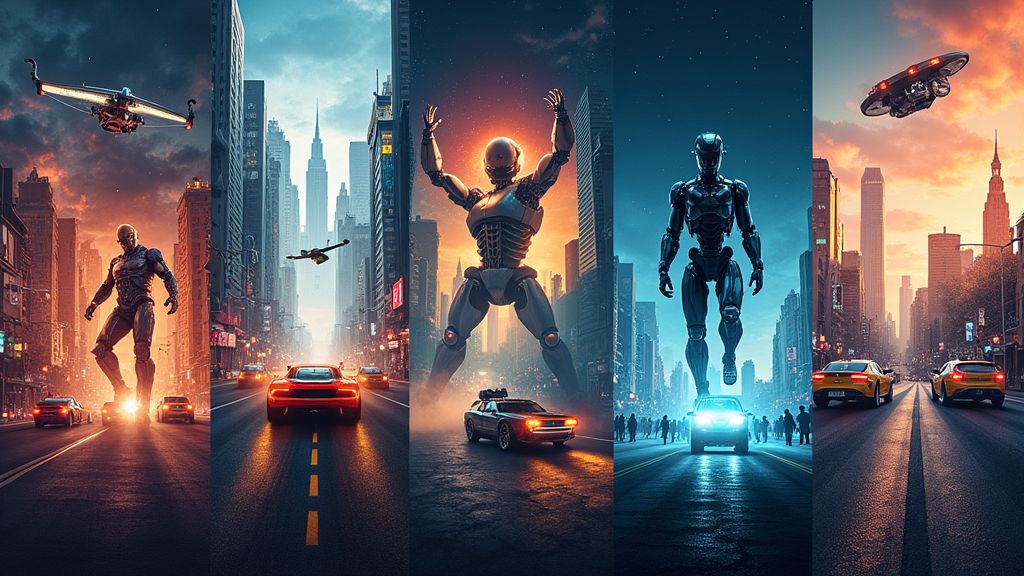Advertisement
How Emo Nostalgia Has Exploded in Popularity

If you’re a Millennial or an elder member of Gen-Z, you probably have fond memories of high school in the mid-2000s to early 2010s, when emo and pop punk bands full of guys in black hoodies rocking eyeliner ruled the radio, and you’re probably overjoyed that the genre is having a massive cultural moment with a wave of reunions and festivals promoting emo nostalgia.
Emo as a term originated in the 1980s to describe a type of “emotional” hardcore punk music coming out of the Washington DC music scene. However for the sake of this discussion, we’re talking about the genre of pop punk music from the mid-2000s that was dubbed emo by the mainstream media (despite the protests of hardcore fans and some of the artists themselves).

The genre first came to full mainstream prominence from 2003-2004. Pop punk megastars Blink-182 and Green Day both released hit albums (Blink’s 2003 self-title album and Green Day’s 2004 political rock opera American Idiot) that embraced darker themes and what would become emo aesthetics and featured smashes like “American Idiot”, Boulevard of Broken Dreams”, and “Wake Me Up When September Ends” for Green Day and “I Miss You”, “Felling This”, and “Down” for Blink.
At the same time, Chicago’s Fall Out Boy and New Jersey’s My Chemical Romance released buzz-generating underground debuts before exploding into the mainstream with their respective second albums, From Under the Cork Tree and Three Cheers for Sweet Revenge. Singles like FOB’s “Sugar, We’re Going Down” and “Dance, Dance” and My Chem’s “Helena (So Long & Goodnight)” and “I’m Not Okay (I Promise)” further broke the genre on the radio and MTV, both of which still played a huge part in the popular music landscape at the time.

Thanks to these successes, a slew of bands and artists associated with the genre (at least from a press perspective) achieved chart success and popularity in the second half of the 2000s, including AFI, Paramore, Panic! at the Disco, Taking Back Sunday, Motion City Soundtrack, The All-American Rejects, All-Time Low, and seemingly countless others. Stalwarts My Chemical Romance and Fall Out Boy continued to pave the way, releasing their respective biggest albums and hits (The Black Parade and Infinity on High) respectively in late 2006/early 2007. However, the tables turned by the end of the decade. Albums and tours stopped selling for most of the genre’s major bands (even FOB and MCR), and it seemed like the genre’s era of mainstream popularity was over.
The first seeds of emo’s revival were planted in February of 2013 when Fall Out Boy returned from a four plus-year hiatus with the smash pop single “My Songs Know What You Did in the Dark (Light Em’ Up)” and album “Save Rock and Roll.” A tour of small venues quickly turned into an arena run, and the band spent the next five years churning out sports-rock anthems that saw them become more popular than ever before. A reconstituted Panic! at the Disco and more pop-oriented Paramore followed similar blueprints to commercial success throughout the second half of the 2010s.

While the successes of FOB, Panic, and Paramore kept the embers of emo burning, they were also seen by many as a sign that the genre itself would never find mainstream popularity again, as all three had to significantly reinvent themselves and their sound to achieve said success. The first sign of a truly nostalgic emo return came at the tail-end of 2019, when My Chemical Romance announced a reunion concert (the band had split in 2013, and hadn’t been truly active since the tour promoting their disappointing-in-sales 2010 album Danger Days: The Fantastic Lives of the Fabulous Killjoys) in Los Angeles. The show garnered massive publicity, and tickets went for thousands on the secondary market. The following month, with no new music to speak of and a publicity campaign built completely around nostalgia for their heyday, tickets for an MCR arena went on sale and were met with massive demand that saw multiple shows sell out immediately and Ticketmaster servers crash.
While the aforementioned MCR tour was postponed several times by the COVID-19 pandemic, eager fans held on to their tickets for almost three years before the wildly successful tour finally happened in the summer and fall of 2022. That same fall, MCR also played the gig that perhaps best symbolized the emo nostalgia revival: The inaugural When We Were Young Festival.

First announced in early 2022, the When We Were Young Festival sounded too good to be true for fans of the emo genre. A weekend (later expanded to two) festival in Las Vegas with a bill that included MCR, Paramore, Bright Eyes, AFI, the Used, Bring Me The Horizon, Boys Like Girls, Avril Lavigne, Taking Back Sunday, Dashboard Confessional, We the Kings, Alkaline Trio, Manchester Orchestra, Dance Gavin Dance, the All-American Rejects, Anberlin, 3OH!3, Atreyu, the Ready Set, Jimmy Eat World, La Dispute, the Wonder Years, Hawthorne Heights, Car Seat Headrest, Wolf Alice, and many others was too much for many fans, who feared the event would be a major disaster like the ill-fated Fyre Festival. However, while the first day of the festival needed to be cancelled due to dangerous winds, the second day went off to rave reviews, and the second weekend looked set to do the same.

While the future of the emo revival is still cloudy, things are still looking up in the short term. Prior to the 2022 festival, tickets to When We Were Young 2023 went on sale to rapturous response. The second instance of the festival will be headlined by Green Day and Blink-182, the latter of whom just announced a massive reunion tour of their own that’s setting records for ticket sales and (to the chagrin of many) ticket prices, showing their still plenty of interest in – and money to be made from – early 2000s emo nostalgia.
Hide Advertisement












